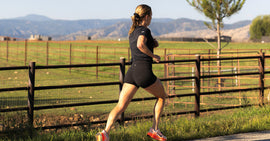Have you ever seen that runner who, in the middle of a race, pulls out a mustard packet to try to get rid of a cramp? It sounds like a joke… but it’s real. So, does mustard actually work against cramps, or is it just a runner’s tale?
The popular theory is simple: since mustard contains a good amount of sodium, it would help replace electrolytes lost through sweat and prevent cramps. The problem is… studies don’t confirm this. Researchers gave athletes up to 135 grams of mustard after intense exercise, and the result? No change in blood sodium or potassium levels. In other words, it doesn’t work as an electrolyte replacement.
But then why do some people say it works? The answer may lie in TRP channels — receptors we have in the mouth, throat, and stomach. Compounds in mustard, such as acetic acid and isothiocyanates, activate these sensors. And what does that do? It triggers a neural reflex that “switches off” the excessive nerve activity causing the cramp. That’s why reports show improvement in less than two minutes — much faster than any digestive absorption could explain. Interestingly, the same effect has been seen with pickle juice and even products developed specifically for this purpose, like HotShot, used by some elite athletes.
In practice, mustard might provide temporary relief from a cramp… but it’s far from a universal solution. The studies are limited, and for any real electrolyte replacement effect, you’d have to eat entire tubes of mustard — which obviously makes no sense. Plus, in many cases, the effect could simply be placebo. So, is it intriguing? Yes. Reliable as a race-day strategy? Not really.
What actually helps reduce cramp risk is consistent training to adapt your muscles, respecting fatigue, and of course proper hydration and electrolyte replacement — sodium, potassium, and magnesium. That’s where solutions specifically designed for endurance come in, like electrolytes in sachets or sticks, which are far more precise and practical than improvising with mustard.
So, mustard for cramps? It’s a myth with a grain of science behind it. If you want to try it, it won’t hurt — but don’t mistake it for a serious hydration strategy. Want to run well? Train, stay hydrated, and use real electrolytes.

